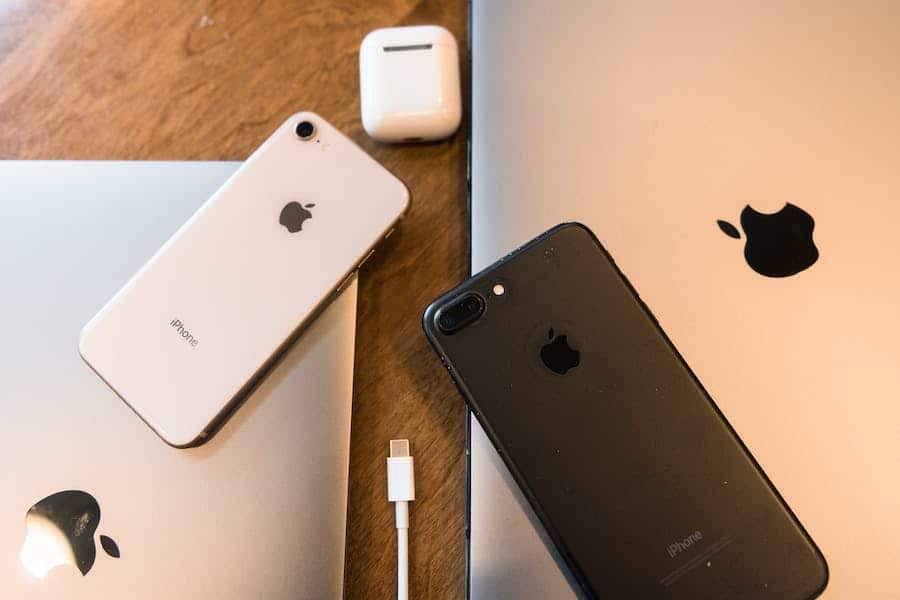Where memories are stored in the cloud and shared effortlessly across devices, iCloud has become an integral part of Apple users’ lives. However, it’s not uncommon to encounter a frustrating dilemma: why is my iCloud storage whole even after deleting photos? This perplexing issue has left many scratching their heads. In this article, we will delve into the intricacies of iCloud storage, debunk common myths, and explore the reasons behind this persistent problem. Moreover, we will provide practical solutions to help you regain control of your iCloud storage and ensure that it serves your needs efficiently. So, let’s unravel why your iCloud storage remains stubbornly full even after you’ve bid farewell to countless photos.
Why Is My iCloud Storage Full After Deleting Photos?
Your iCloud storage can remain full even after deleting photos due to several factors. One common reason is that deleted photos are not immediately removed but are moved to the “Recently Deleted” folder, where they can take up space for up to 30 days. Additionally, other items like device backups, app data, and messages with attachments also consume iCloud storage. To free up space effectively, ensure you permanently delete photos from the “Recently Deleted” folder, manage shared albums, and review app data and backup settings. Understanding these aspects will help you make the most of your iCloud storage.
What Are The Main Reasons iCloud Storage Is Whole After Deleting Photos?
iCloud storage can still be full after deleting photos due to several reasons:
Recently Deleted Album: When you delete photos from your iCloud Photo Library, they don’t immediately disappear. Instead, they are moved to the “Recently Deleted” album, where they stay for up to 30 days before being permanently deleted. This safety net is designed to prevent accidental data loss. However, even though you delete photos, they can still occupy space until they are removed from this folder.
Shared Albums: If you’re part of shared photo albums, remember that the photos you delete from your albums might still exist in the shared albums. These shared photos contribute to your iCloud storage usage, so even if you delete them from your albums, they will only be removed entirely once they are deleted from the shared albums as well.
Message Attachments: Photos and videos shared through the Messages app can accumulate over time and consume a considerable amount of iCloud storage. These attachments often go unnoticed, and unless you actively delete them from conversations, they continue to occupy space.
App Data: Some apps use iCloud to store data, settings, and documents. Over time, this data can accumulate and consume a significant portion of your iCloud storage. To manage this, you should review and adjust the settings of individual apps to reduce their data footprint.
Device Backups: If your iPhone, iPad, or other Apple devices are set to back up to iCloud automatically, these backups include not only photos but also app data and device settings. Frequent backups can quickly fill up your iCloud storage, especially if multiple devices are linked to the same iCloud account.
Large Files And Documents: In addition to photos and videos, iCloud may also be used to store large files and documents. These can include PDFs, presentations, and other files you may have stored in iCloud Drive or other apps that utilize iCloud storage.
How Are Deleted Photos Retained For A Specific Period?
Deleted photos are retained for a specific period in the iCloud ecosystem to provide users with a safety net and the opportunity to recover accidentally deleted content. Here’s how this retention process works:
When you delete photos from your iCloud Photo Library, they don’t vanish into thin air. Instead, they are transferred to a designated folder known as the “Recently Deleted” album. This album safeguards against accidental deletions and ensures users have a grace period to recover their photos.
Deleted photos remain within the “Recently Deleted” album for a predetermined retention period. Typically, this retention period is set at 30 days, although it may vary slightly. During this time, the photos are technically still a part of your iCloud Photo Library, even though they are hidden from your main library.
The crucial feature of this setup is that it allows users to recover deleted photos. If you realize you’ve made a mistake or want a deleted photo back, you can access the “Recently Deleted” album within the Photos app on your iOS device or through iCloud.com on a web browser. From there, you can select the photos you wish to retrieve and choose the “Recover” option.
After the retention period expires (typically 30 days), iCloud will automatically and permanently delete the photos stored in the “Recently Deleted” album. At this point, these photos are irretrievable and are no longer counted towards your iCloud storage quota.
It’s essential to understand this process when managing your iCloud storage. Deleted photos remain in your storage until they are removed from the “Recently Deleted” album. To maximize your available iCloud storage, consider periodically reviewing and permanently deleting photos from this album, especially if you are nearing your storage limit.
How To Manage iCloud Storage?
Managing iCloud storage is essential to ensure that you have enough space for your data and to optimize the use of your storage plan. Here’s a detailed guide on how to manage your iCloud storage effectively:
Check Your Current Storage Usage:
Begin by assessing your current iCloud storage usage. To do this on an iOS device, go to “Settings,” tap your name at the top, select “iCloud,” then “Manage Storage.” On a Mac, navigate to “Apple Menu > System Preferences > Apple ID > iCloud > Manage.” Understanding your current usage is crucial for planning your management strategy.
Review And Delete Unnecessary Backups:
Check which devices are backing up to iCloud and whether you need all of them to do so. You can manage device backups by going to “Manage Storage,” as mentioned above. You can delete backups of old or unused devices to free up space. Be cautious not to delete backups of devices you’re currently using.
Optimize Photos And Videos:
If you use iCloud Photo Library, review your photos and videos. Delete any that you no longer need or move them to your local device storage. Also, ensure you’ve set up “Optimize iPhone Storage” (iOS) or “Optimize Mac Storage” (macOS) in your Photos settings to save space by keeping lower-resolution versions in the cloud.
Manage iCloud Drive:
Go through your iCloud Drive and clean up any files or documents you no longer require. Consider moving larger files to local storage or an external drive if they’re not frequently accessed.
Review And Manage App Data:
Some apps may store data in iCloud, contributing to storage usage. Go to “Manage Storage” and review the apps listed there. You can disable iCloud storage for specific apps or delete their data if it’s not crucial.
Empty The “Recently Deleted” Album:
Deleted photos and videos are stored in the “Recently Deleted” album for a limited time before permanently deleting them. Regularly review and empty this album to free up space.
Manage Messages And Attachments:
Messages and their attachments, especially media files, can consume iCloud storage. Delete old conversations or specific message attachments that you no longer need.
Consider Upgrading Your Storage Plan:
If you consistently run out of space despite managing your data, it might be time to upgrade your iCloud storage plan. Apple offers various storage tiers, so choose one that suits your needs.
Additional iCloud Storage Options
Aside from managing your existing iCloud storage, there are additional options and strategies you can consider to address your storage needs effectively:
- If you find that you consistently need more space on your current iCloud storage plan, consider upgrading to a larger plan. Apple offers storage tiers, including 50GB, 200GB, and 2TB (as of my last knowledge update in January 2022). Choose a plan that accommodates your needs and budget.
- If you’re part of a family-sharing group, you can also share your iCloud storage plan with family members. This can be a cost-effective way to provide additional storage for multiple users within your family.
- iCloud+ is an enhanced version with additional features and privacy benefits. It has a VPN service (Private Relay), Hide My Email for enhanced privacy, and HomeKit Secure Video support. While it doesn’t provide more storage per se, it can be an attractive option for users who value privacy and these additional features.
- Using a Mac with macOS Catalina or later, you can store some of your less frequently used files and documents in iCloud Drive while using external storage devices, such as external hard drives or SSDs, for larger files and archives. This combination lets you keep your important files accessible while offloading less critical data.
- Consider using other cloud storage services besides iCloud. Services like Dropbox, Google Drive, Microsoft OneDrive, and others offer free storage plans and paid options with various capacities. You can use these services to store different data types or as alternatives if you need more storage flexibility.
- Instead of relying solely on automatic iCloud backups and syncing, manually manage your data. This includes periodically transferring photos and videos to your computer, deleting unnecessary files, and being selective about what you store in iCloud.
- Backup Locally: While iCloud backups are convenient, you can also create local backups of your iOS devices on your computer using iTunes or Finder (on macOS Catalina and later). This can help you save space on iCloud while still having a backup of your device.
- Cloud Storage Apps: Some apps and services specialize in managing and optimizing cloud storage across multiple platforms. Consider using these tools to help you streamline your data storage and backups.
Bottom Line
Effectively managing your iCloud storage is crucial to ensure you have enough space for your important data while optimizing your storage resources. Start by reviewing your current usage, regularly deleting unnecessary backups, and optimizing photos and videos. Additionally, keep an eye on app data, messages, and attachments. Consider upgrading your iCloud storage plan if needed and explore other cloud storage options if they better suit your requirements. By staying proactive and organized in your approach to iCloud storage management, you can ensure a seamless and efficient experience while using Apple’s cloud services.
FAQ’s
How Do I Check My Current Icloud Storage Usage?
On iOS devices, go to “Settings,” tap your name, select “iCloud,” then “Manage Storage.” On macOS, navigate to “Apple Menu > System Preferences > Apple ID > iCloud > Manage.” This will show your current usage.
Can I Delete Photos From iCloud Permanently?
Yes, you can permanently delete photos from iCloud by going to the “Recently Deleted” album and selecting the photos you want to remove. After deletion, they won’t count towards your storage and cannot be recovered.
What Can I Do To Free Up Icloud Storage?
To free up iCloud storage, you can delete unnecessary device backups, manage shared albums, remove message attachments, optimize photos and videos, and review and adjust app data settings. Regularly cleaning the “Recently Deleted” album is also crucial.








